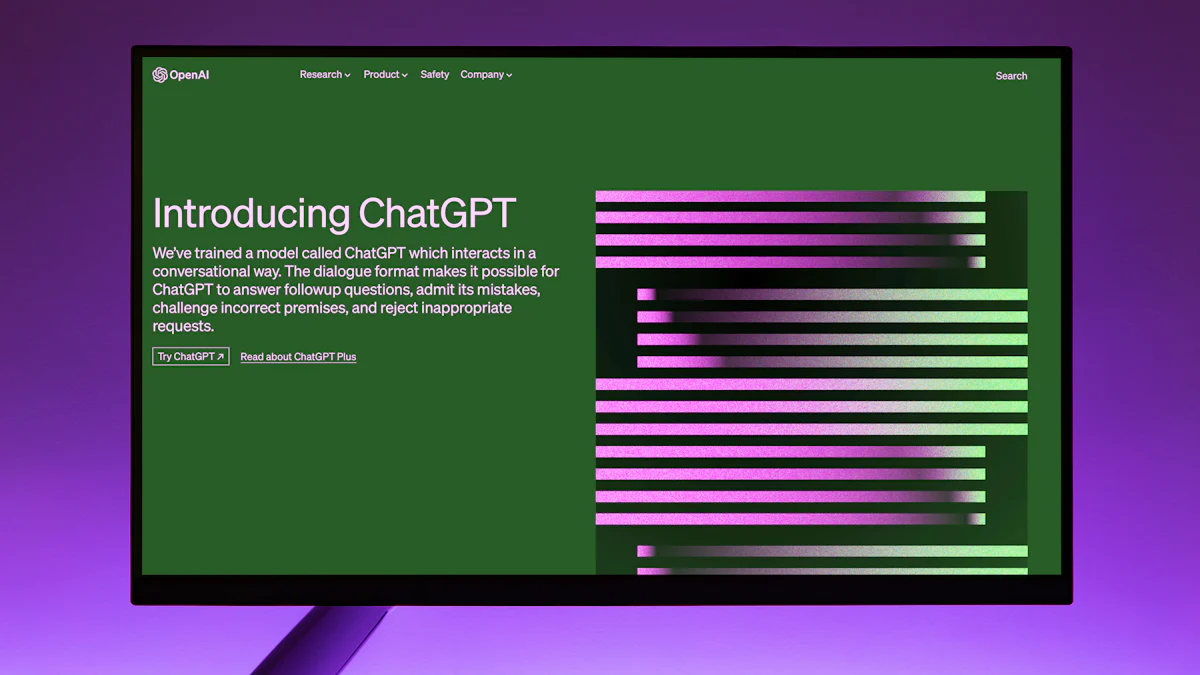Claude 3 vs GPT-4: A Practical Comparison of Performance

Introduction to AI Language Models
Artificial Intelligence (AI) has rapidly integrated into our daily lives, revolutionizing the way we interact with technology. The evolution of AI language models has been nothing short of remarkable, with the development of increasingly sophisticated architectures. From GPT-3, a 175 billion-parameter model, to the smaller yet capable GPT-J with 6 billion parameters, and the colossal Megatron-Turing Natural Language Generation (MT-NLG) boasting an astounding 530 billion parameters, these advancements have reshaped the landscape of AI.
What sets Claude 3 and GPT-4 apart is their exceptional performance and distinct capabilities. Claude 3 has demonstrated unparalleled proficiency in undergraduate-level knowledge (MMLU), achieving an impressive accuracy of 86.8%, surpassing GPT-4's 86.4%. Additionally, Claude 3 Opus exhibits near-human levels of intelligence and comprehension across various cognitive tasks, including reasoning, expert knowledge, mathematics, and language fluency.
On the other hand, GPT-4 boasts a broad scope of knowledge and versatility across different domains. Its prowess in code generation and problem-solving sets it apart as a formidable contender in the AI language model arena.
As these models continue to push boundaries and redefine possibilities in AI, it becomes essential to delve deeper into their capabilities to understand their potential impact on various aspects of our lives.
Stay tuned as we explore the distinctive features and performance benchmarks of Claude 3 and GPT-4 in detail.
Understanding Claude 3's Capabilities
Claude 3, the latest iteration in the Claude series, introduces several novel features and capabilities that set it apart from its predecessors and competitors. One of its key strengths lies in its advanced analytical skills, allowing it to process and interpret complex data with remarkable fluency. Moreover, Claude 3 boasts image-text analysis proficiency, showcasing unparalleled capabilities in handling diverse visual formats such as photos, charts, graphs, and technical diagrams.
The vision capabilities of Claude 3 are particularly noteworthy, as they enable the model to adeptly handle diverse visual formats, including scientific diagrams and images. This proficiency is showcased in tasks like the AI2D science diagram benchmark and visual question answering, where Claude 3 excels in parsing scientific diagrams and achieving high accuracy rates in both zero-shot and few-shot settings.
Furthermore, all models within the Claude 3 family exhibit improved fluency in non-English languages, making them versatile for a global audience. The multimodal capabilities of Claude 3 allow it to understand both text and visual inputs, enhancing its overall versatility across various tasks. This feature is crucial for analyzing and processing complex, unstructured information in a variety of formats.
In addition to its vision capabilities, Claude 3 Opus stands out as the most intelligent model within the family. It offers unparalleled performance on complex tasks by excelling in handling open-ended prompts and navigating sight-unseen scenarios with remarkable fluency and human-like understanding. These capabilities showcase the outer limits of generative AI.
The efficiency in content conversion, superior image-text extraction, enhanced question-answering accuracy, along with its impressive multimodal capabilities make Claude 3 a formidable contender in the realm of AI language models.
Exploring GPT-4's Features
GPT-4, the latest breakthrough in AI language models, boasts an expansive reservoir of knowledge and unparalleled versatility across different domains. Its broad scope of knowledge encompasses a diverse array of subjects, ranging from scientific disciplines to humanities, enabling it to provide comprehensive and insightful responses across various topics. This breadth of understanding positions GPT-4 as a valuable resource for individuals seeking in-depth information and analysis.
Moreover, GPT-4's remarkable capabilities extend beyond textual inputs, as it can accept visual input and utilize more sophisticated reasoning mechanisms. This unique feature empowers the model to process complex visual data alongside textual information, enhancing its ability to comprehend and analyze multimodal content effectively. The integration of visual input expands the model's applicability in fields such as image recognition, content summarization, and data interpretation.
In addition to its prowess in handling diverse inputs, GPT-4 excels in code generation and problem-solving tasks. It demonstrates exceptional proficiency in generating extensive textual outputs with high factual accuracy, making it a valuable tool for tasks requiring comprehensive documentation or detailed reports. Furthermore, its sophisticated reasoning capabilities enable it to tackle complex problem-solving scenarios with precision and depth.
GPT-4's Performance Highlights
The performance benchmarks of GPT-4 underscore its graduate-level reasoning abilities and text analysis proficiency. It exhibits a nuanced understanding of intricate concepts and demonstrates the capacity to engage in high-level reasoning akin to that of graduate-level scholars. This capability positions GPT-4 as an invaluable resource for academic research, critical analysis, and scholarly discourse.
Furthermore, GPT-4 showcases impressive multilingual capabilities, enabling it to comprehend and generate content across various languages with remarkable fluency. Its aptitude for multilingual communication enhances its accessibility on a global scale while facilitating seamless interactions with diverse linguistic communities.
Direct Comparison: Claude 3 vs GPT-4
Analytical Skills and Reasoning
When comparing Claude 3 and GPT-4, it becomes evident that both models exhibit exceptional analytical skills and reasoning capabilities. However, the key differences lie in their performance in specific cognitive tasks. Claude 3 demonstrates superior graduate-level reasoning with an accuracy rate of 92.5%, surpassing GPT-4's 91.8%. This distinction highlights Claude 3's proficiency in engaging with complex, abstract concepts and formulating logical conclusions at an advanced level.
Moreover, in real-world problem-solving scenarios, Claude 3 showcases enhanced capabilities, particularly in areas such as math problem solving and reasoning over text. Its accuracy rates in grade school math and multilingual math problem solving outperform those of GPT-4, solidifying its position as a robust solution for practical applications requiring mathematical fluency and cross-lingual competence.
Practical Applications in Various Fields
The practical applications of Claude 3 and GPT-4 span across diverse fields, including education, research, business, and technology. In the realm of education and research, Claude 3 emerges as a valuable asset due to its exceptional performance in undergraduate-level knowledge, graduate-level reasoning, and enhanced question-answering accuracy. These attributes position Claude 3 as a reliable resource for academic institutions seeking advanced AI support for educational tools and scholarly pursuits.
On the other hand, within the domain of business and technology, both models offer distinct advantages. While GPT-4 leverages its broad scope of knowledge to provide comprehensive insights across various domains, Claude 3's prowess in code generation and reasoning over text presents unique opportunities for innovative solutions in software development, data analysis, and content generation.
Real-World Applications and Impact
Enhancing Educational Tools
AI language models such as Claude 3 and GPT-4 have the potential to revolutionize educational tools, offering advanced capabilities that can enhance learning experiences. The proficiency of Claude 3 in Graduate-Level Question Answering (GPQA) positions it as a valuable tool for educators and students alike. Its ability to provide informed insights and aid in decision-making processes demonstrates its potential to augment educational resources, enabling learners to access comprehensive and accurate information across various subjects.
On the other hand, GPT-4's broad scope of knowledge and graduate-level reasoning abilities make it an invaluable asset for academic research and critical analysis. Leveraging GPT-4's extensive reservoir of knowledge can enrich educational materials, providing students with detailed insights into complex concepts and diverse subject matters.
The integration of AI language models into educational tools holds promise for personalized learning experiences, comprehensive knowledge acquisition, and enhanced academic support across diverse disciplines.
Innovations in Business and Technology
In the realm of business, both Claude 3 and GPT-4 offer unique advantages that can drive innovation and efficiency. A case study by Morgan Stanley showcases the application of GPT-4 in validating decades-worth of information to provide insights for financial advisors. This demonstrates how AI language models can streamline data validation processes, enabling professionals to access consolidated information efficiently.
Moreover, Claude 3's capabilities in live customer chats, auto-completions, and real-time data extraction tasks make it an ideal solution for businesses seeking immediate responses and seamless interactions with customers. Its proficiency in handling real-time customer queries aligns with the growing demand for efficient customer service solutions.
Furthermore, the comparison of Claude 3 with other models highlights its enhanced capabilities in diverse areas such as analysis, forecasting, nuanced content creation, code generation, and multilingual conversation proficiency. These attributes position Claude 3 as a versatile tool for driving technological innovations across various industries.
The integration of AI language models into business operations presents opportunities for streamlining processes, enhancing customer interactions, and fostering technological advancements that can propel industries forward.
Conclusion
The Future of AI Language Models
The rapid advancements in AI language models, exemplified by Claude 3 and GPT-4, herald a future where artificial intelligence will play an increasingly pivotal role in shaping human interactions with technology. These models signify a paradigm shift in the capabilities of AI, offering unprecedented levels of comprehension, reasoning, and problem-solving across diverse domains. As research and development continue to propel the evolution of AI language models, we can anticipate even more sophisticated iterations that will redefine the boundaries of what is achievable in artificial intelligence.
Making an Informed Choice Between Claude 3 and GPT-4
In light of the evidence demonstrating Claude 3's enhanced capabilities compared to GPT-4 across various benchmarks and performance metrics, it becomes evident that Claude 3 is positioned as a strong competitor to GPT-4. The superior performance of Claude 3 Opus in undergraduate-level knowledge, graduate-level reasoning, math problem-solving, and code generation underscores its prowess as a leading AI language model. Therefore, individuals seeking an AI language model with advanced analytical skills, multilingual proficiency, and exceptional reasoning abilities may find Claude 3 to be the optimal choice for their specific requirements.
Ultimately, the decision between Claude 3 and GPT-4 hinges on the specific needs and objectives of users. While both models offer remarkable capabilities, Claude 3's demonstrated excellence across various academic areas positions it as a compelling option for those seeking cutting-edge AI support.
By considering the distinctive strengths and performance benchmarks of each model, individuals can make an informed choice that aligns with their unique use cases and objectives within the realm of AI language models.
Logical Reasoning:
Premise: Evidence showcases Claude 3's outperformance compared to GPT-4 in multiple categories.
Conclusion: Claude 3 is positioned as a strong competitor to GPT-4.
See Also
Understanding ChatGPT: An Extensive Overview of OpenAI's Language Model
Mastering ChatGPT: A Beginner's Definitive Manual for SEO
Maximizing the Advantages of ChatGPT for SEO
Enhance Data Analysis Using QuickTable
Conquering Challenges of Massive Language Models in AI Content Creation

